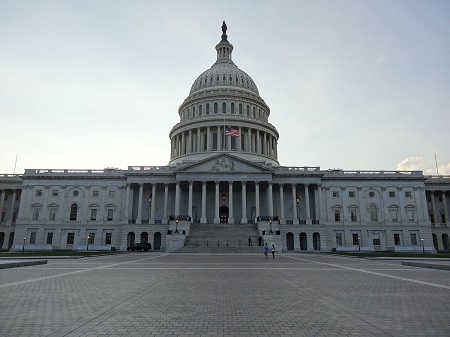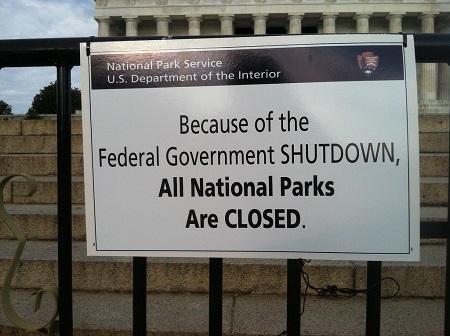Wastewater Visibility News
The Government Shutdown & the Effect It Has Had on Our Environment
The Government Shutdown & the Effect It Has Had on Our Environment
OUR NATION’S WATER, LAND, AND WILDLIFE AT RISK
By now, you have most likely heard about the temporary reopening of the government after a monthlong shutdown, the longest in US history. In case you need a refresher on what has happened beginning December 22, 2018, the Washington Post1 has a great article summarizing everything you need to know. But just how has the government shutdown impacted our environment so far, and what happens when the short-term deal ends on February 15th?

The U.S. Environmental Protection Agency (EPA), a group dedicated to protecting America’s land, air, and water, is one of the major environmental agencies whose employees had been furloughed since late December. According to the New York Times2 , inspections that EPA workers would normally have performed had been halted, including the inspections of wastewater treatment plants, chemical factories, power plants, oil refineries, and other industrial-type sites. These inspections are meant to monitor pollution and ensure compliance.
“There are plants that discharge wastewater into streams and rivers, places that store hazardous chemicals in containers that could leak – we show up and test these places to see if they’re meeting pollution laws,” said Garth Connor, a furloughed EPA inspector in Philadelphia […]. “[There has been] nobody out there to check if they’re complying.”2
Now that the shutdown has been temporarily suspended, EPA employees may return to their jobs, but a backlog of inspections and work needing to be rescheduled most likely awaits them. Eric Schaeffer, former EPA enforcer, reflects on the effects the shutdown from December 16, 1995 to January 6, 1996 had.
“That was one of the worst years ever at the EPA in terms of numbers and of inspections and enforcement,” Schaeffer said. “Everything was ground to a halt, bogged down. You can’t just restart at 100 miles per hour. You have to reschedule everything.” 2
The National Oceanic and Atmospheric Administration (NOAA) is another environmental agency whose employees were furloughed, shutting down essential functions of the organization. Newsweek3 recently reported that portions of their website were removed and not maintained. During the shutdown, NOAA’s ability to perform primary functions such as ocean research and conservation, weather and climate observation, natural hazards alerts, water quality monitoring, species tracking, and more were affected. It is unclear which NOAA functions will resume during the short-term reopening of the government.
Hurricane research4 is another important function of NOAA that has been on hold since late December. Due to gaps in data tracking as a result of the shutdown, accurate forecasting models for the upcoming hurricane may be impacted.

Visited a national park in the last month? You may have found that admission was free, but amenities such as campgrounds, restrooms and guard stations were closed. Parks, historical sites, monuments, and battlefields were essentially wide open with no one left to maintain the lands, reported the Washington Post5. The National Park Service issued a warning to use caution when entering a park or monument property. With no one to staff and patrol these areas, visitors flocked to unattended parks leaving trash, walking off-trail, and causing potentially lasting damage to protected land and wildlife areas.
Joshua
Tree National Park Superintendent David Smith [said] that visitors [were]
illegally off-roading, cutting down trees and spray-painting rocks, among other
infractions.
“Joshua trees were actually cut down to make new roads,” Smith said.5
While park employees were furloughed, volunteers stepped up across the country and donated their time to pick up trash, cleaned restrooms, donated supplies, and helped maintain the areas.
“People are doing it because we love this place and we know how trashed it will get if we don’t,” said a volunteer helping at Joshua Tree National Park.6
Once the parks reopen, park employees will be responsible for cleaning up and repairing what remains of the mess left by visitors.
With the short-term reopening now in effect, government workers can look forward to a long-awaited paycheck that includes backpay during the shutdown. The reopening is only scheduled to last until February 15th, 2019. At that time, Congress will need to approve additional funds or another governement shutdown will ensue. If another shutdown were to occur so soon, there’s no telling how much more lasting damage will affect our land, water, and wildlife.
2 https://www.nytimes.com/2019/01/09/climate/epa-pollution-inspection-shutdown.html
3 https://www.newsweek.com/noaa-climate-data-taken-offline-during-shutdown-1302273

Author Notes
Wastewater Visibility News
Tags:
More Recent Posts

First-Ever National Drinking Water Standard to Protect 100M People from PFAS Pollution

Are Your Wastewater Tanks Consuming Excess Energy Due to Sand and Grit? Emerging Technology Can Help You Find Out

Happy Easter

Efficiency in Serving Wastewater Utilities
Subscribe
Get news delivered straight to your inbox the day it gets published."*" indicates required fields
